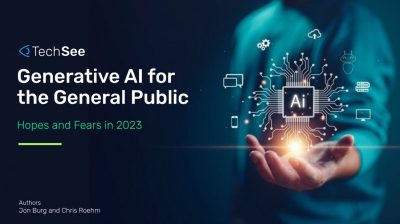How AI and tech are driving the convergence of HR & IT
AI and technology are reshaping the workplace, merging HR and IT into a single function. Drawing on insights from the...

ChatGPT has fueled a global interest in Generative AI. However, very few people (12%) use this first-generation technology regularly.
Public opinion of Generative AI is split between those alarmed and those optimistic about this technology. AI Optimists and AI Adopters tend to be in their mid-30s and 40s, are more educated, hold senior or executive positions, and have higher household incomes. In contrast, AI Skeptics trend older, less educated, and have lower average household incomes.
The overall public is open to using AI for service (over 85%) and automating manual tasks like writing a paper or monitoring home security cameras. In contrast, only AI Adopters would allow AI to take on tasks with higher stakes, such as driving a car, flying a plane, or making a medical decision.
The public prefers AI to human agents when (a) there is a wait for a human or (b) when the AI service is as good or better than a human agent. When AI in service works well, all but the biggest AI Skeptics view the brand favorably, increasing revenues while reducing costs. The public’s poor experience with bad chatbots and virtual assistants has led 77% of people to expect companies to use AI for service to “save a buck,” even if it’s less helpful. In fact, their top two AI concerns are job loss and ease of use.
Investment in AI must innovate in the UX, CX and backend technology. The Service Leaders’ imperative is to deliver end-customer service AI with the speed, convenience and intuitive engagement to build the brand rather than disappoint and alienate customers.
Platform provided by TechSee, delivered to you by Donnabrook in Australia, New Zealand and Asia Pacific.
Would you like to explore how AI-supported modern communications might help your environment? Book a 15-minute consult .
AI and technology are reshaping the workplace, merging HR and IT into a single function. Drawing on insights from the...
Navigating Victoria’s AI restrictions: implications for state-funded organisations On June 24, 2025, the Victorian Government rolled out tough new guidelines...
HealthTech 2025 showcased how AI, virtual care, and digital records are reshaping patient-centred care. Leaders from Australia and abroad shared...
© 2024 Donnabrook Pty Ltd | Privacy Policy | Site by Better Known